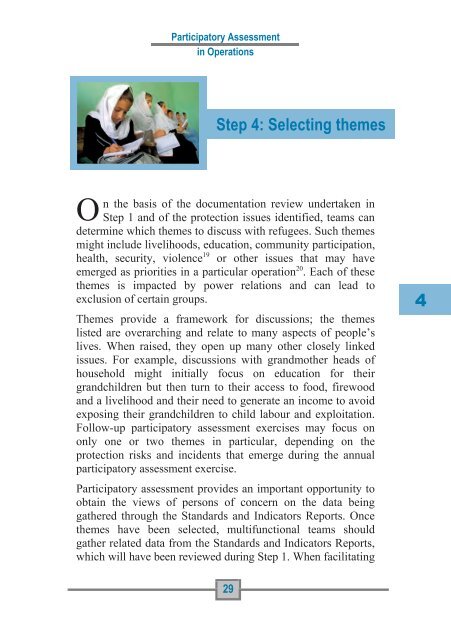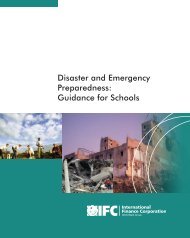Participatory Assessment - Refworld
Participatory Assessment - Refworld
Participatory Assessment - Refworld
- No tags were found...
You also want an ePaper? Increase the reach of your titles
YUMPU automatically turns print PDFs into web optimized ePapers that Google loves.
in OperationsStep 4: Selecting themesOn the basis of the documentation review undertaken inStep 1 and of the protection issues identified, teams candetermine which themes to discuss with refugees. Such themesmight include livelihoods, education, community participation,health, security, violence 19 or other issues that may haveemerged as priorities in a particular operation 20 . Each of thesethemes is impacted by power relations and can lead toexclusion of certain groups.Themes provide a framework for discussions; the themeslisted are overarching and relate to many aspects of people’slives. When raised, they open up many other closely linkedissues. For example, discussions with grandmother heads ofhousehold might initially focus on education for theirgrandchildren but then turn to their access to food, firewoodand a livelihood and their need to generate an income to avoidexposing their grandchildren to child labour and exploitation.Follow-up participatory assessment exercises may focus ononly one or two themes in particular, depending on theprotection risks and incidents that emerge during the annualparticipatory assessment exercise.<strong>Participatory</strong> assessment provides an important opportunity toobtain the views of persons of concern on the data beinggathered through the Standards and Indicators Reports. Oncethemes have been selected, multifunctional teams shouldgather related data from the Standards and Indicators Reports,which will have been reviewed during Step 1. When facilitating34
















